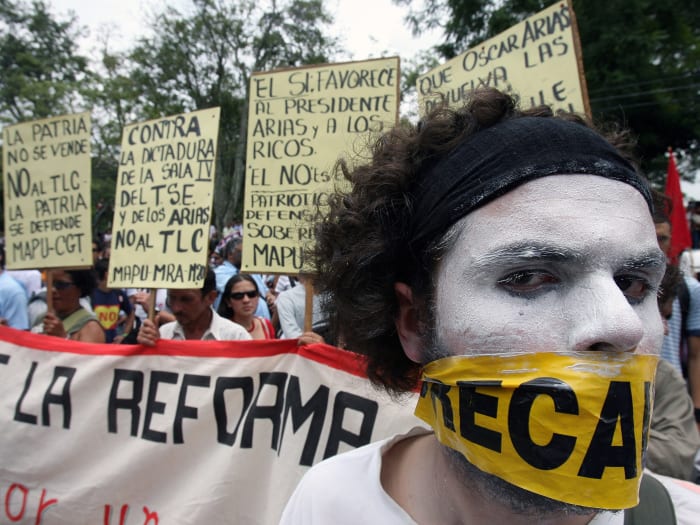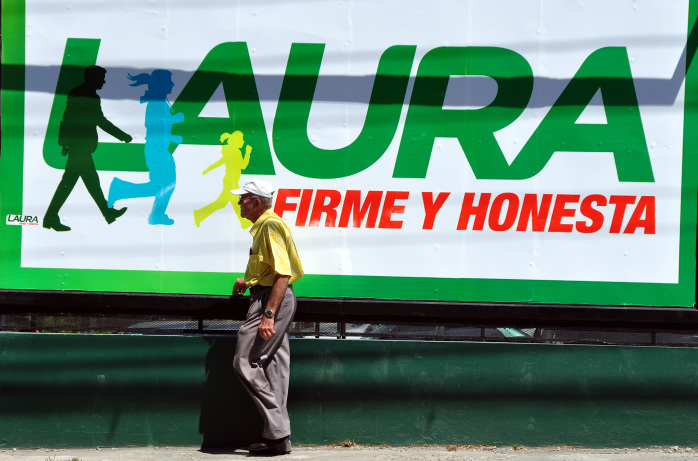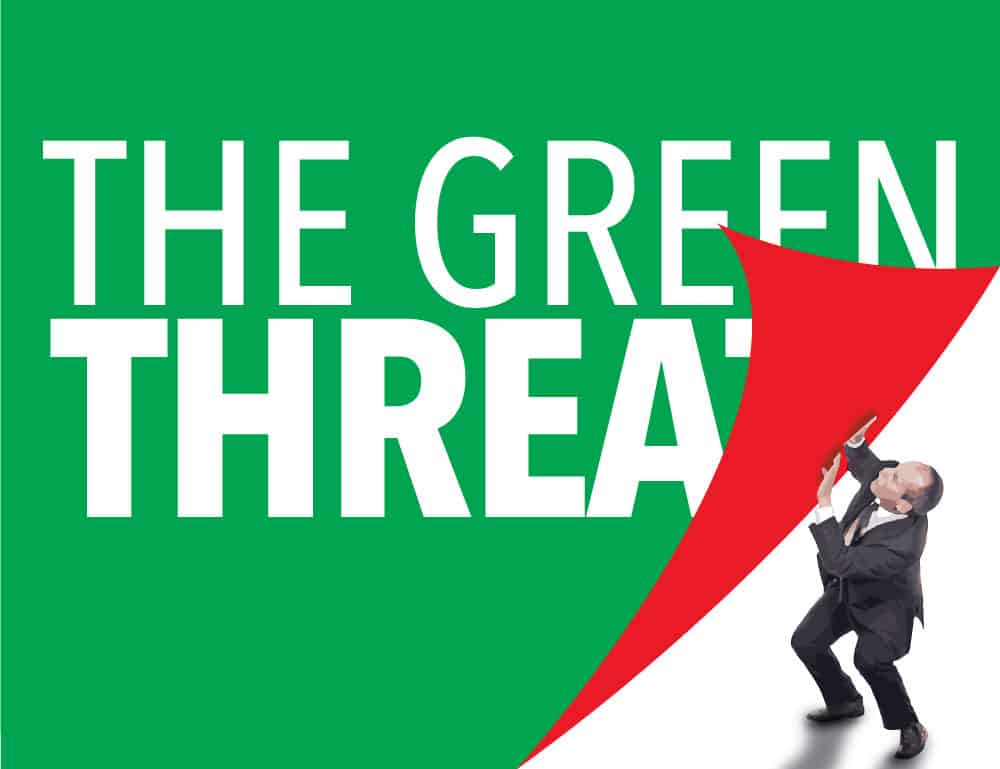The current living conditions many Venezuelans face – inflation at 56 percent, shortages of flour and milk in stores and one of the worst murder rates in the world, among others – have brought new protests and violence to the streets of Caracas. In Costa Rica, Venezuela’s woes take on a different significance. Since Hugo Chávez’s election in 1998 his Bolivarian Republic has served as rhetorical shorthand for both the political right and left.
For the right, Venezuela conjures images of the communist bogeyman who feeds on the children of the bourgeoisie. For the left, it represents the exemplar of utopian socialism, a Marxist heaven on Earth.
In Costa Rica, many applaud Venezuela’s use of petroleum wealth to greatly expand education, increase access to health services, reduce poverty and promote economic equality, while many others condemn what they see as simply another Latin American military dictatorship impoverishing the populace and generating the very real problems of inflation, state corruption, censorship of the media, rampant crime and frequent food shortages.

This ideological divide has been put to profitable use by the political elite in Costa Rica. In 2007, Chávez’s Venezuela was the specter haunting the debate over the Central American Free Trade Agreement with the United States (CAFTA). Then-Second Vice President Kevin Casas’ now infamous memo made it clear that a red scare was just the thing to bring voters on board. He reasoned that a “yes” vote could be won if voters were frightened into believing that a rejection of CAFTA’s neoliberal reforms would convert Costa Rica into another Venezuela. The tactic worked, and voters narrowly approved CAFTA.
“We must emphasize ‘No’s’ ties to Fidel [Castro], [Hugo] Chávez and [Daniel] Ortega,” the memo stated.
In the first round of the 2014 elections, the red-baiting directed against Broad Front Party presidential candidate José María Villalta was seen as responsible for his failure to reach the electoral runoff set for April 6. Now, members of the Legislative Assembly and their denizens of social media are trying to make this same tactic work against candidate Luis Guillermo Solís by claiming the Citizen Action Party is the new communist threat in Costa Rica. Whether this Orwellian campaign can convince voters again is an open question. After all, it was only three weeks ago that Frente Amplio was the big red threat. But these “red scare” campaign tactics beg another question: “Is there a communist threat in Costa Rica?”
Putting aside the disingenuous hyperbole of members of the Assembly who are worried about their promised political posts in a future Araya administration, the intangible influence of Chávez’s charismatic populism, and the ultra-tangible fact of a large and potent military ready to support a socialist president, what is the evidence to suggest that Costa Rica – Central America’s most middle-class country – is in danger of becoming the next Venezuela?
There are certain resemblances between the pre-Bolivarian Venezuela and present-day Costa Rica. For example, the evolution of the two-party system to a multi-party system during the 20 years prior to Chávez’s election is one institutional change that is also occurring in Costa Rica today. Throughout the 1960s, ’70s, and ’80s, Venezuela was ruled by broad, catch-all political parties that were not identified with class or narrow ideological appeals. That began to change in the ’90s in Venezuela and culminated with the election of Chávez and his new party, the Movimiento Quinta República, in 1998.
Recommended: Costa Rican legislative elections show growing voter dissatisfaction with traditional choices
Similarly, Costa Rica, prior to 2002, had never had a third party win more than six seats in the Assembly. Since that time, third parties have won significant numbers of seats from the once-dominant parties, creating greater division on the Cuesta de Moras and making it more difficult to form governing coalitions that last.
From the late ’80s through the ’90s, political corruption scandals left citizens of Venezuela fed up with politics as usual. The massive corruption of President Carlos Pérez’s administration led Chávez and other military officers to attempt a coup d’état in 1992. The following year, when Pérez was convicted of fraud and corruption, Chávez was vindicated, released from prison, and formed a new political party to begin his legitimate ascent to power.

In Costa Rica, similar corruption scandals have left voters distrustful of once traditional parties. The political corruption of the last 15 years has resulted in two ex-presidents threatened with jail time and the two most recent administrations embroiled in scandals of political favoritism and quid pro quo. In this ethos of political corruption many voters in Costa Rica have been ready to put their faith and their votes elsewhere.
Another factor in Venezuela’s turn to the socialist left was the change in the economic conditions experienced in the ’90s. Precipitated by President Pérez’s acceptance of the same neoliberal reforms he had run against during his campaign, a fierce economic privation fell hardest on the poor and vulnerable. According to the United Nations, in the decade that followed these reforms, the median income of Venezuelan citizens dropped 45 percent. Between 1980 and 1998, poverty levels increased by 18 percent and the middle class, the stalwart of democratic stability, contracted, increasing the divide between rich and poor. The combination of increasing poverty, greater economic inequality and a disappearing middle class caused social disintegration, desperation and a doubling of the crime rate in the decade before Chávez’s election.
Recommended: #SOSVenezuela
Costa Rica faces many similar challenges today. With an unemployment rate of 8.3 percent – the second-highest in Latin America, according to United Nations Economic Commission for Latin America and the Caribbean – economic vulnerability is on the rise. Unemployment, coupled with the government’s inability to decrease poverty in the last 20 years, leaves a full fifth of Costa Rica’s population in poor or extremely poor living conditions. This same fifth of the population spends nearly 8 percent of its income on rice alone, according to a 2014 World Bank Study. And despite a rise in the production of wealth in Costa Rica, this economic wave has not lifted all boats. Since 2000, the gap between rich and poor has been growing, not shrinking.
Citizen insecurity, too, has also been on the rise in Costa Rica. A 2011 World Bank Study revealed that Costa Ricans who reported being victims of crime doubled between 1997 and 2008. And in 2014, four years after a president was elected on a platform of “Firme y Honesta” (“Firm and Honest”), promising greater citizen security and an end to political corruption, the World Bank again reiterated that “the country faces increasing levels of crime linked to drug trafficking,” threatening future economic growth.
Despite these indicators, it seems highly unlikely that Costa Rica will follow Venezuela toward a communist future anytime soon. Still, one does find disturbing echoes of Venezuela in the social conditions and current political culture of Costa Rica today that could make some voters more susceptible to communist ideas and socialist policies. But neither Costa Rica’s political culture nor its growing socioeconomic problems have materialized from a red fog spreading across Latin America. Nor are they the result of the political rhetoric and beliefs of the Broad Front Party. Nor can they be laid at the door of PAC, a party that has never held the reins of political power.
The threat that Costa Rica could become the next Venezuela is found in the corrupt governance and failed economic policies of the last two decades. These factors have created greater voter distrust of government, increased economic inequality, mounting levels of poverty, and unacceptable levels of crime – all of which were precursors to the rise of Chávez in Venezuela.
The real threat in the upcoming Costa Rica election isn’t a red threat. It’s verdiblanco.
Gary L. Lehring is a professor of government at Smith College, Northampton, Massachusetts. He is on sabbatical in Costa Rica. Read more of his columns by clicking on the hashtag #Elections 2014. Follow our Venezuela coverage at hashtag #Bolivarian Revolution.






